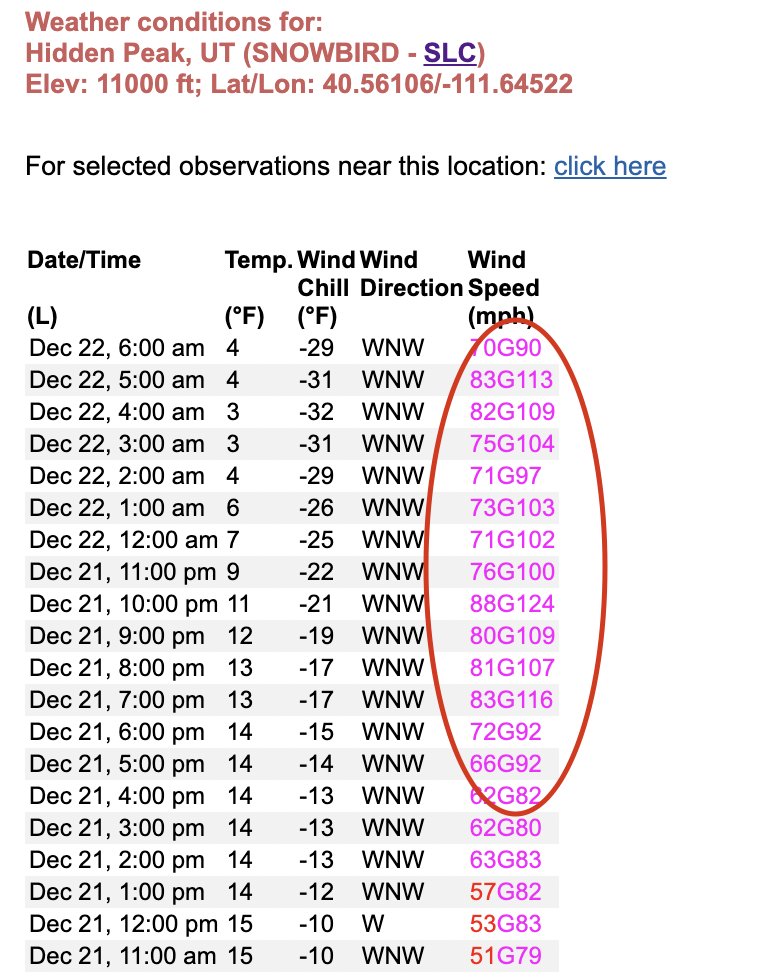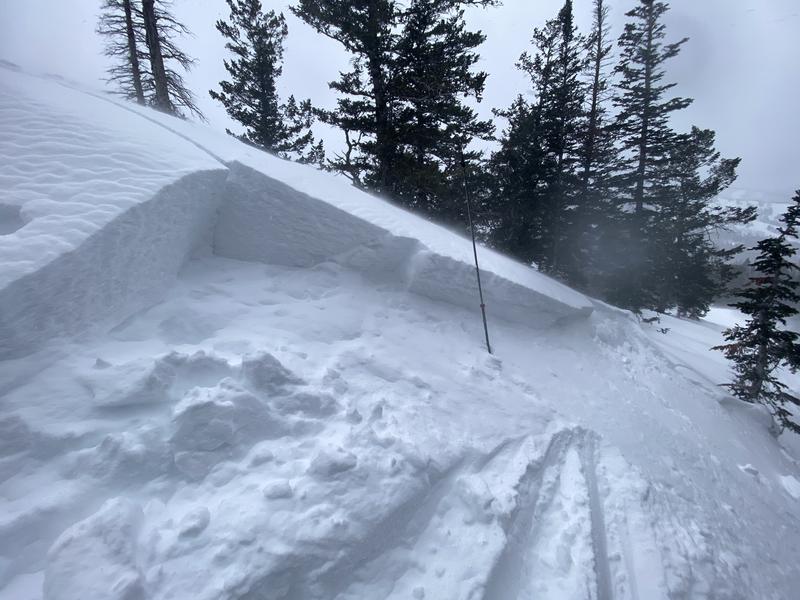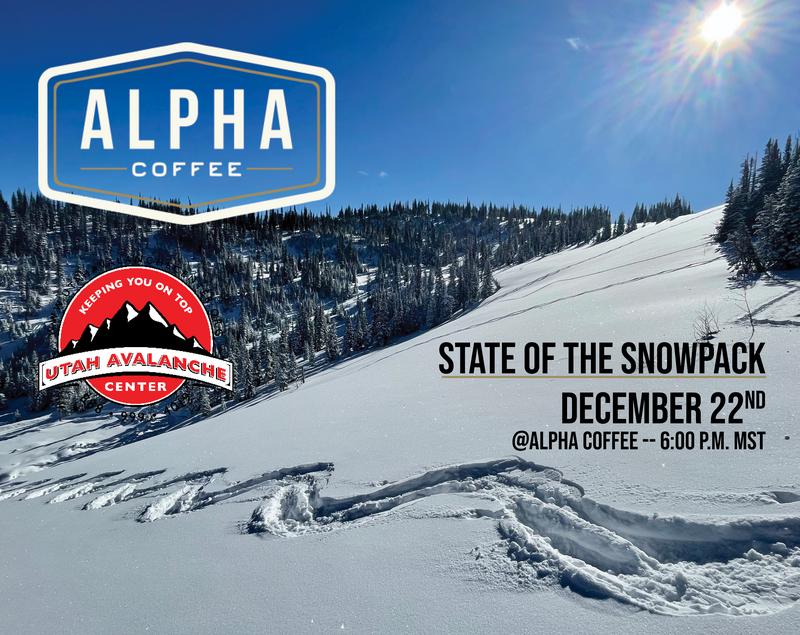Forecast for the Salt Lake Area Mountains

Issued by Nikki Champion on
Thursday morning, December 22, 2022
Thursday morning, December 22, 2022
Due to sustained extremely high winds and new snow the avalanche danger is HIGH on all aspects at upper elevations where human-triggered avalanches are very likely and CONSIDERABLE on all aspects at mid-elevations. Watch for and avoid any freshly formed wind drifts on all upper and mid-elevation slopes. Give extra caution to any slopes that receive the additional weight of wind-drifted snow facing northwest-north-northeast-east because of a persistent weak layer buried 1-4' deep.
The avalanche danger is MODERATE on low-elevation slopes that received overall less wind and less snow.
Any avalanche triggered within the wind-drifted snow has the potential to step down into deeper weak layers in the snowpack, creating a very large and dangerous avalanche.

Low
Moderate
Considerable
High
Extreme
Learn how to read the forecast here











